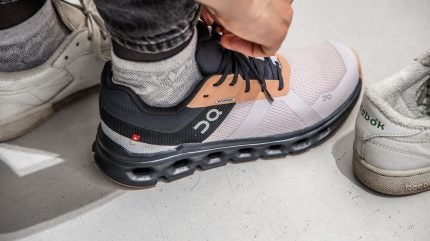Explainer: Will sportswear remain the bright spot for apparel in 2025?

EXPLAINER: WILL SPORTSWEAR REMAIN THE BRIGHT SPOT FOR APPAREL IN 2025?
The emergence
of challenger brands could be a concern for sportswear brand executives in
2025, especially as in 2024 these brands are forecast to generate over half of
the sportswear segment’s economic profit, up from 20% in 2020.
November 21, 2024
While
sportswear grew faster than the broader fashion market in key regions in 2023,
fast-growing challenger brands such as Deckers are now expected to make up 57%
of the sportswear segment’s economic profit, nearly tripling since 2020.
According to McKinsey & Co’s State of Fashion 2025 report, challengers have succeeded by growing revenue faster than incumbents while also expanding their profitability. Challengers are expected to have grown revenues 18% per year between 2020 and 2024E (estimated) — 14% points (%points) above incumbents — and improved profitability by 4% points over the period, while incumbents saw profitability decline 2.4% points.
Why are challenger brands proving popular?
McKinsey acknowledges that challenger brands have delivered on visible innovation where traditional brands have struggled. It points out the example of Hoka’s “oversized midsoles offering unique cushioning” which are easily identifiable and On’s CloudTec soles which use a “distinct, pod-like design to provide runners with support.”
It also points out that challenger brands target specialised “niche” categories unlike incumbents which focus on a broader set of sports categories.
“Lululemon built its business to $6bn in 2021 by addressing the athleticwear gap for women, which incumbents had failed to conquer. Women’s sales represented less than 25% of NIKE’s wholesale sales in fiscal 2023 and of Under Armour’s total sales in 2023,” reads the report.
The report says another area where challengers are succeeding is tapping into cultural marketing. Having more specialised audiences over the wide fanbases of incumbents has allowed them to convey “greater authenticity with communities”. For example, it says, Vuori and Gymshark focused on grassroots marketing, building ties with Southern California yogis and the English gym scene, respectively.
And they’ve managed to fill wholesale white space at a time when incumbent brands like Nike and adidas began to actively shift distribution towards direct-to-consumer (DTC) channels, de-emphasising wholesale.
“While incumbent brands moved away from some wholesale partners, challenger brands moved into highly visited retailers, like Dick’s Sporting Goods and JD Sports. Many challengers capitalised on the shift by pursuing wholesale-first strategies, driving 65% to 70% of sales.”
Will sportswear continue to dominate in 2025?
In short, yes. Sportswear’s growth is expected to continue to outpace the broader fashion market in key regions, by 5% to 6% points (%points) in China, 3% points in the US and 2% to 3% points in Europe.
As much as 90% of sportswear companies are predicting either steady or increased sales in the year ahead with key growth drivers including the increasingly blurred boundary between fashion and activewear, the prioritisation of health and wellbeing across age groups, and growing access to sports content and events.
But challenger brands are likely to dominate in the battle to capture share of market growth, having continued to see gains in their stock performance.
According to McKinsey’s report, from January to the end of September 2024, ASICS’ share price jumped 168%, On’s rose 91% and Hoka-parent Deckers’ was up 38%. While incumbents have seen a more negative development — except for Adidas, which regained momentum with the revival of its hit Samba sneaker.
“This reinforces the need for incumbents to refresh their strategies around product, marketing and channel,” it says.
Three ways sportswear brands can capture growth in 2025
Diversify: Brands must balance catering to sports that give them access to the largest customer bases (highest participation rate) against those that drive the most cultural credibility (high number of fans following the sport).
Straddling territories: Performance and athleisure brands are going deeper into each other’s territories, like Alo Yoga, known for athleisure, yoga and training gear, launched its first performance-focused running shoe in 2024, while On is expanding into categories such as training and tennis, aiming to double its share of apparel sales in three to five years. Lululemon plans to double its men’s business by 2026 compared to 2021, focusing on performance sports such as golf and tennis.
Innovation: Material and product innovations are crucial to build credibility in sports categories. McKinsey says fewer breakthrough innovations have emerged in recent years with patent grants dropping 55% between Q4 of 2021 and 2023.
Balancing DTC versus wholesale: McKinsey notes On and Hoka are planning to continue their expansion into direct-to-consumer (DTC). Nike and Adidas meanwhile are renewing part of their focus on wholesale after shifting heavily towards DTC and experiencing missed sales targets and rising inventory levels. DTC it adds will be used for customer experience and community building while wholesale is important to increase reach and brand presence.
